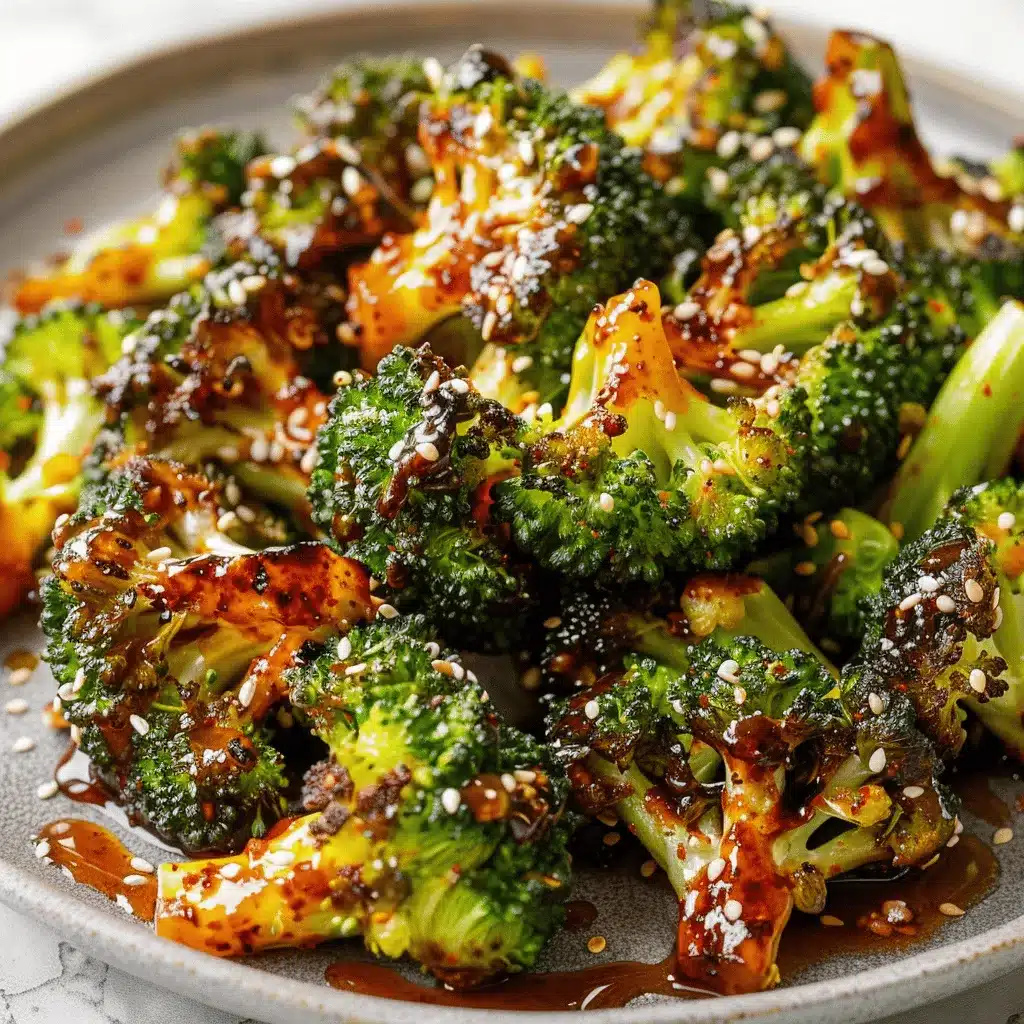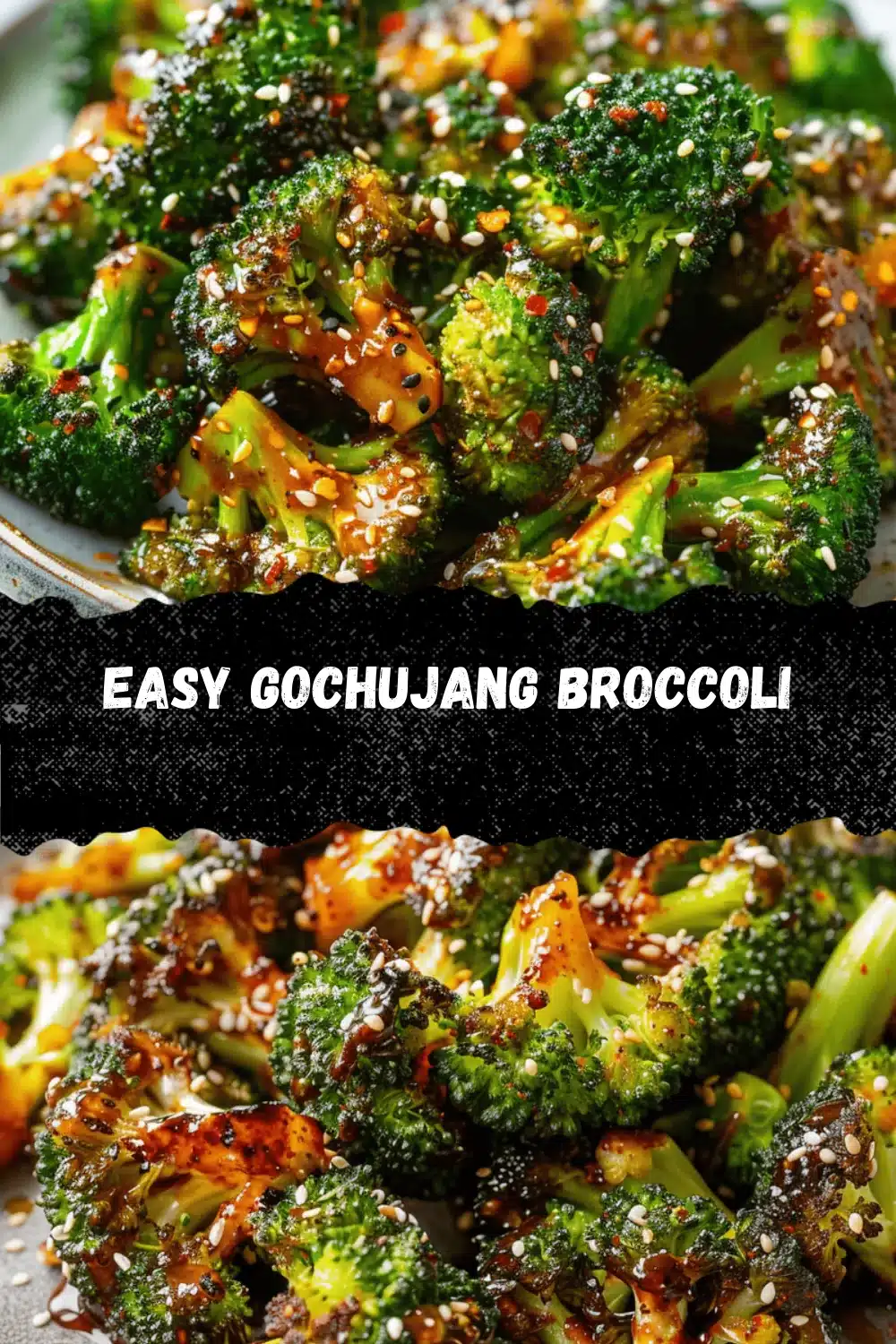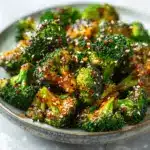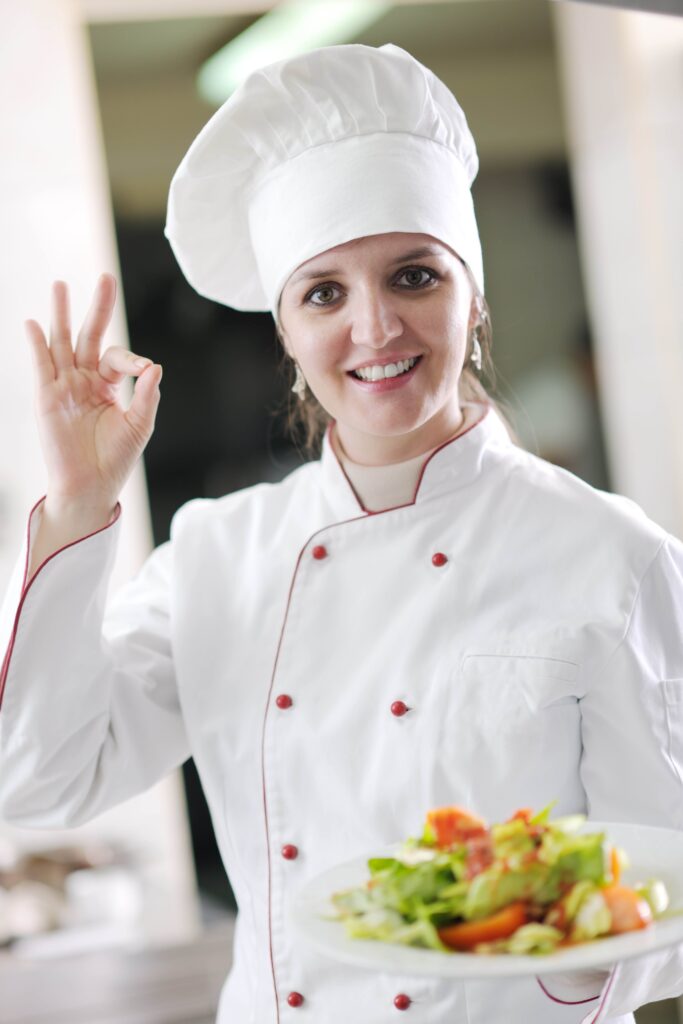The first time I tossed broccoli florets with a glossy, spicy-sweet gochujang sauce, something just clicked. The kitchen filled with a toasty, garlicky aroma, and that first bite—tender yet still snappy broccoli, coated in umami-rich heat—made me wonder why I hadn’t thought of it sooner! If you’re anything like me, you might have a half-used tub of gochujang (Korean chili paste) lurking in your fridge, begging for a weeknight moment in the spotlight. Well, this easy gochujang broccoli recipe is it—fast, bold, and honestly, kind of addictive.
I stumbled upon this combo during a takeout craving gone wrong (the restaurant was closed, but my taste buds were not taking “no” for an answer). So, I started experimenting. After a few rounds (and a couple burnt pans, not gonna lie), I landed on this version: a quick Asian veggie side dish that punches way above its weight in flavor. Whether you’re meal-prepping, feeding picky eaters, or just want to jazz up your dinner plate, this gochujang broccoli is a total winner—no wok required.
Here’s why I love it: it’s ready in just 15 minutes, perfectly balanced between spicy, savory, and just a touch sweet. The broccoli gets tender but not mushy, and the sauce clings to every little floret. I’ve made it as a stand-alone veggie side, tossed it into rice bowls, and even piled it over noodles. As someone who’s cooked professionally and at home for years, I’m always on the lookout for recipes that deliver big flavor with minimal fuss. This is one of those “back pocket” dishes that never disappoints. Trust me, after you try this gochujang broccoli, you’ll be looking for excuses to make it again and again.
Why You’ll Love This Easy Gochujang Broccoli Recipe
- Quick & Simple: This gochujang broccoli comes together in under 15 minutes—perfect for busy weeknights or when you need a last-minute side dish.
- Minimal Ingredients: You probably already have most of what you need, and gochujang is the only “specialty” item (which, let’s face it, is the MVP of the condiment shelf).
- Versatile Crowd-Pleaser: Whether it’s a casual family dinner, a festive potluck, or a cozy lunch for one, this dish fits right in. Even the vegetable skeptics in my family asked for seconds!
- Unbeatable Flavor: The combination of spicy, sweet, and garlicky goodness makes every bite memorable. The sauce is bold without being overwhelming.
- Healthy Comfort Food: Broccoli is packed with nutrients, and this recipe lets it shine without drowning it in heavy sauces or cheese.
- One-Pan Wonder: No complicated steps or piles of dirty dishes. If you’re a fan of efficiency (or just hate washing up), this is right up your alley.
After years of testing Asian-inspired side dishes (some real winners, some utter flops—looking at you, soggy stir-fry), I can confidently say this recipe is special. What sets it apart? The sauce—blending gochujang with just the right amount of soy sauce, honey, and sesame oil—brings out the best in broccoli. I’m all about recipes that make veggies exciting, and this one does the trick every single time. It’s not just another boring side—it’s the dish everyone asks for the recipe to.
Honestly, this is the kind of comfort food that doesn’t weigh you down. It’s a little spicy, a little sweet, and totally satisfying. Whether you’re looking to impress dinner guests or just upgrade Tuesday night’s leftovers, this gochujang broccoli recipe is your secret weapon. Give it a go, and don’t be surprised if it steals the spotlight from the main course!
Ingredients Needed for Gochujang Broccoli
This easy gochujang broccoli recipe is all about bold flavors from a handful of simple, reliable ingredients. Most are pantry staples—nothing fancy, just real ingredients that come together for knockout results. Here’s what you’ll need:
- Broccoli florets (about 1 pound / 450g, cut into bite-sized pieces)
- Gochujang (Korean red chili paste) (2 tablespoons / 30g – I use the Chung Jung One brand for its balanced heat, but any will work. Adjust for your spice tolerance!)
- Soy sauce (1 tablespoon / 15ml – use low sodium if you prefer a lighter salt kick)
- Honey or maple syrup (1 tablespoon / 15ml – adds just the right touch of sweetness; maple syrup for vegan)
- Sesame oil (2 teaspoons / 10ml – toasted is best for that nutty aroma)
- Rice vinegar (1 teaspoon / 5ml – for a little zip, but you can use apple cider vinegar in a pinch)
- Garlic cloves (2, finely minced)
- Neutral oil (1 tablespoon / 15ml – like avocado, canola, or grapeseed oil for sautéing)
- Sesame seeds (1 teaspoon / 4g – for garnish; optional, but they add a nice crunch and visual pop)
- Green onions (1-2, thinly sliced for garnish – optional, but highly recommended for freshness)
Ingredient Notes & Tips:
- If you’re out of gochujang, sriracha can substitute in a pinch (though the flavor is a bit different—gochujang is richer and a touch sweet).
- You can totally use frozen broccoli in a hurry! Just steam or microwave it first to avoid excess water in the pan.
- For a gluten-free side, swap tamari or coconut aminos for soy sauce.
- If you love heat, toss in a pinch of red pepper flakes or a drizzle of extra gochujang.
- Want extra veggies? Toss in some sliced bell peppers or snap peas for more color and crunch.
- If you’re watching sugar, you can halve the honey or even leave it out (though it rounds out the flavors nicely).
Honestly, I’ve made this with whatever I have on hand. The real star is the gochujang—once you’ve got that, you’re halfway to flavor town. If you’re new to gochujang, don’t worry—it’s not just spicy, but packed with umami, so it brings a ton of flavor with very little effort. Just don’t skip the sesame oil; it really ties the whole thing together.
Equipment Needed
- Large skillet or nonstick frying pan – I prefer a 12-inch skillet for maximum surface area (less crowding = better browning), but any sturdy pan will do.
- Sharp knife and cutting board – For prepping the broccoli and garlic.
- Mixing bowl – To whisk together the gochujang sauce. I usually grab a small glass bowl and a fork.
- Measuring spoons and cups – Precision matters, especially with gochujang’s kick.
- Tongs or spatula – For flipping and tossing the broccoli so it gets evenly coated.
- Serving plate or bowl – Something wide and shallow works best for presentation (especially if you’re pinning your plate to Pinterest!).
If you don’t have a big skillet, you can use a wok or even a heavy-bottomed saucepan; just cook the broccoli in batches to avoid steaming. My favorite pan is a well-seasoned cast iron—it gives the best browning and flavor, but it does require a little extra oil and care. For a budget-friendly option, any basic nonstick pan will do the trick (just avoid metal utensils to keep your coating safe). And if you’re short on measuring tools, I’ve eyeballed it before—just go a little lighter on the gochujang if you’re new to the heat!
Preparation Method

- Prep the broccoli:
Wash and dry about 1 pound (450g) of broccoli. Cut into bite-sized florets. If using the stems, peel and slice them thinly—they’re great for soaking up sauce!
Tip: Dry broccoli browns better, so give it a good pat with a towel. - Mix the sauce:
In a small bowl, whisk together 2 tablespoons (30g) gochujang, 1 tablespoon (15ml) soy sauce, 1 tablespoon (15ml) honey or maple syrup, 2 teaspoons (10ml) toasted sesame oil, and 1 teaspoon (5ml) rice vinegar. Set aside.
If your gochujang is extra thick, splash in a teaspoon of water for a smoother sauce. - Heat the oil and garlic:
Add 1 tablespoon (15ml) neutral oil to a large skillet over medium-high heat. When hot, add the minced garlic (2 cloves). Sauté for 20-30 seconds, just until fragrant—don’t let it brown or it’ll get bitter. - Sear the broccoli:
Add the broccoli florets to the skillet. Stir to coat with garlicky oil, then spread into a single layer. Let cook, undisturbed, for 2-3 minutes so you get some nice browning on one side.
The broccoli should start to turn bright green and smell toasty. - Steam to finish:
Pour in 2-3 tablespoons (30-45ml) water. Cover the pan and let steam for 2 minutes. This softens the broccoli without making it mushy.
Peek under the lid—if the water’s gone and broccoli is fork-tender but still crisp, you’re golden. - Add the gochujang sauce:
Remove the lid. Pour the sauce over the broccoli and toss well to coat. Let it bubble for 1-2 minutes, stirring constantly, until the sauce thickens and clings to the broccoli.
If it looks dry, add a splash of water; if it’s too runny, crank the heat and keep stirring. - Finish and garnish:
Take the skillet off the heat. Sprinkle with sesame seeds and green onions (if using). - Serve immediately:
Transfer to your serving plate or bowl. Enjoy hot for the best texture!
Personal note: If you like a little extra crunch, toss in some roasted peanuts or cashews before serving. And if you’re meal-prepping, double the sauce—it’s great drizzled over rice or tofu the next day. Don’t be afraid to taste as you go; gochujang varies a lot in heat, so you can always add more but you can’t take it away.
Cooking Tips & Techniques
- Don’t overcrowd the pan: Spread broccoli out in the skillet, or it’ll steam instead of sear. If you’re doubling the batch, cook in two rounds for the best browning.
- Adjust the heat to your taste: Gochujang brands vary from mild to pretty spicy. Start with less if you’re sensitive, and add more as needed. I learned this the hard way—once, my “medium” gochujang had us all reaching for milk.
- Use high heat for a better texture: Broccoli should stay crisp-tender, not soggy. Searing first gives you flavor and locks in crunch.
- Keep an eye on the garlic: Burnt garlic = bitter sauce. Add it right before the broccoli, and don’t walk away.
- Steam, then sauce: Letting the broccoli steam after searing ensures it’s cooked through but not limp. Add the sauce after, so it coats every nook and cranny.
- Multitasking tip: While the broccoli steams, prep your garnishes or set the table. It all comes together fast!
- Consistency matters: If you like a saucier finish, add a splash of water before serving. If you want it sticky, let it cook down a bit longer.
One of my early attempts ended up as gochujang broccoli soup (whoops—too much water and not enough heat). Lesson learned: go easy on the liquid, and don’t be afraid to crank the stove for those last couple minutes. The sauce should be thick and glossy, not runny. And hey, if you mess up, just call it a “fusion bowl” and pile it over rice. No one will complain!
Variations & Adaptations
- Vegan or Vegetarian: The recipe is naturally vegetarian. Just use maple syrup or agave instead of honey for a fully vegan gochujang broccoli.
- Gluten-Free: Substitute gluten-free tamari or coconut aminos for the soy sauce. Double-check your gochujang ingredients—some brands contain wheat.
- Low-Carb/Keto: Omit the sweetener or use a keto-friendly syrup. Broccoli is naturally low-carb and this makes a great keto side dish.
- Extra Veggies: Add sliced bell peppers, snow peas, or carrots to the pan with the broccoli. It makes the dish more colorful and hearty.
- Roasted Gochujang Broccoli: Toss the broccoli and sauce together, spread on a baking sheet, and roast at 425°F (220°C) for 15-18 minutes. The edges get a bit caramelized and it’s just as delicious.
- Protein Boost: Stir in cubed tofu, tempeh, or shredded rotisserie chicken for a more filling main.
- Nut-Free: Skip the sesame seeds, or swap for sunflower seeds if you want a little crunch.
Personally, I’ve tried this gochujang broccoli with both roasted and sautéed methods—roasting wins for crispiness, but sautéing is unbeatable for speed. And when I want a meal-in-one, I just add some leftover grilled chicken or crispy tofu. The sauce works with almost anything!
Serving & Storage Suggestions
Serving: I love serving gochujang broccoli piping hot, straight from the skillet, piled high on a wide plate with a sprinkle of sesame seeds and green onions. For a pretty Pinterest finish, arrange the florets in a shallow bowl and scatter colorful chili threads or extra scallions on top. It makes a show-stopping side for Asian-inspired mains—think teriyaki salmon, Korean BBQ, or simple grilled tofu. Honestly, I’ve even tucked leftovers into wraps for lunch the next day.
Pairings: This dish is awesome with steamed jasmine rice, brown rice, or noodles. For a complete meal, pair with crispy tofu, baked chicken, or even pan-fried dumplings. A little miso soup on the side doesn’t hurt, either!
Storage: Store leftover gochujang broccoli in an airtight container in the fridge for up to 3-4 days. The flavors deepen overnight, so it’s great for meal prep. Reheat in a skillet over medium heat, adding a splash of water to loosen the sauce if needed, or zap in the microwave for 1-2 minutes. You can freeze it, but the broccoli may lose a bit of its bite—still tasty, just a little softer.
Pro tip: The sauce thickens in the fridge, so add a teaspoon of water when reheating for saucier results. And if you’re making it ahead for a party, just keep the garnishes separate until serving for the freshest look.
Nutritional Information & Benefits
This easy gochujang broccoli is as good for you as it is delicious. Here’s a quick breakdown (per serving, recipe serves 4):
- Calories: ~90
- Protein: 3g
- Carbs: 13g
- Fat: 3g
- Fiber: 3g
- Sugar: 5g (mostly from honey/maple and the broccoli itself)
Health Perks: Broccoli is a powerhouse—high in vitamin C, K, folate, and fiber. Gochujang brings probiotics and fermented goodness, while sesame oil delivers healthy fats. This side dish is naturally vegetarian, can be made vegan or gluten-free, and fits most healthy eating plans. Allergens to watch: soy (from the sauce), sesame (from oil/seeds), and wheat (in some gochujang or soy sauces).
Personally, I love that this recipe makes veggies crave-worthy without relying on heaps of cheese or cream. It’s part of my regular “feel-good” rotation—satisfying, nourishing, and never boring!
Conclusion
If you’re ready to shake up your veggie routine, this easy gochujang broccoli is the way to go. It’s quick, bold, and totally foolproof—trust me, I’ve made it more times than I can count! Whether you’re a spice lover, a broccoli skeptic, or just looking for a new side dish to add some excitement to dinner, this recipe checks all the boxes. I love how it brings together simple ingredients and big flavors for a result that’s both healthy and seriously satisfying.
Make it your own—amp up the spice, toss in extra veggies, or double the batch for meal prep. However you serve it, I hope it becomes as much of a favorite in your kitchen as it is in mine. If you try this gochujang broccoli, let me know in the comments! Share your twists, pin your plate, or tag me on social—I love seeing your creations. Happy cooking, and here’s to making veggies downright irresistible!
Frequently Asked Questions
What is gochujang and where can I find it?
Gochujang is a Korean fermented chili paste that’s spicy, sweet, and packed with umami. You’ll find it in most Asian grocery stores, some larger supermarkets, or online. It usually comes in a red tub or squeeze bottle—look for it in the international section.
Can I use frozen broccoli for this recipe?
Yes! Just thaw and pat the broccoli dry first. You might want to steam it briefly before sautéing to avoid excess water in the pan. The end result is still delicious, just a bit softer in texture.
Is this gochujang broccoli recipe vegan?
It’s vegetarian as written, and you can make it vegan by swapping honey for maple syrup or agave. Also, double-check your gochujang, as a few brands use anchovy extract (most are vegan, but not all).
How spicy is the finished dish?
It’s mildly spicy, but not overwhelming. If you’re sensitive to heat, start with 1 tablespoon of gochujang and add more to taste. If you love spice, toss in some extra chili flakes or another half tablespoon of gochujang!
What can I serve with gochujang broccoli?
This side is super versatile—serve it with rice, noodles, grilled chicken, tofu, or your favorite Asian-inspired main. It’s also great as part of a grain bowl or tucked into wraps for lunch the next day.
Pin This Recipe!


Easy Gochujang Broccoli
- Total Time: 15 minutes
- Yield: 4 servings 1x
Description
This quick and bold Asian-inspired side dish features tender broccoli florets tossed in a spicy-sweet gochujang sauce. Ready in just 15 minutes, it’s a healthy, flavorful way to jazz up any meal.
Ingredients
- 1 pound broccoli florets (about 450g), cut into bite-sized pieces
- 2 tablespoons gochujang (Korean red chili paste)
- 1 tablespoon soy sauce (low sodium if preferred)
- 1 tablespoon honey or maple syrup
- 2 teaspoons toasted sesame oil
- 1 teaspoon rice vinegar (or apple cider vinegar)
- 2 garlic cloves, finely minced
- 1 tablespoon neutral oil (avocado, canola, or grapeseed)
- 1 teaspoon sesame seeds (optional, for garnish)
- 1–2 green onions, thinly sliced (optional, for garnish)
- 2–3 tablespoons water (for steaming)
Instructions
- Wash and dry the broccoli. Cut into bite-sized florets. Peel and slice stems if using.
- In a small bowl, whisk together gochujang, soy sauce, honey or maple syrup, sesame oil, and rice vinegar. If the sauce is very thick, add a teaspoon of water.
- Heat neutral oil in a large skillet over medium-high heat. Add minced garlic and sauté for 20-30 seconds until fragrant but not browned.
- Add broccoli florets to the skillet. Stir to coat with garlic oil, then spread into a single layer. Let cook undisturbed for 2-3 minutes to brown.
- Pour in 2-3 tablespoons water. Cover and steam for 2 minutes until broccoli is bright green and crisp-tender.
- Remove lid. Pour gochujang sauce over broccoli and toss to coat. Cook for 1-2 minutes, stirring, until sauce thickens and clings to broccoli.
- Remove from heat. Sprinkle with sesame seeds and green onions if using.
- Serve immediately while hot.
Notes
For vegan, use maple syrup instead of honey. For gluten-free, use tamari or coconut aminos and check your gochujang label. Don’t overcrowd the pan for best browning. Adjust gochujang to taste for spice level. Add extra veggies or protein as desired. Roasting variation: toss broccoli and sauce, roast at 425°F for 15-18 minutes.
- Prep Time: 5 minutes
- Cook Time: 10 minutes
- Category: Side Dish
- Cuisine: Asian, Korean-inspired
Nutrition
- Serving Size: About 1 cup cooked broccoli
- Calories: 90
- Sugar: 5
- Sodium: 350
- Fat: 3
- Saturated Fat: 0.5
- Carbohydrates: 13
- Fiber: 3
- Protein: 3
Keywords: gochujang broccoli, spicy broccoli, Asian side dish, Korean broccoli, vegetarian, vegan option, quick broccoli recipe, healthy side, easy gochujang recipe










